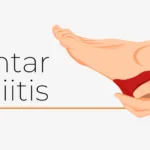Having thick, healthy hair is a sign of youth and vitality for many. But for those genetically prone to male or female pattern baldness, it can feel like a losing battle. The culprit in many cases of hair loss is dihydrotestosterone (DHT), a hormone that binds to receptors in scalp follicles, causing them to shrink over time.
While medications like finasteride aim to inhibit DHT production, emerging research shows that certain exercises may also help block DHT and its impact on hair naturally. Read on to understand more about DHT, how exercise counteracts it, and the step-by-step workout routines that can support thicker, fuller locks.
By the end, you’ll have in-depth knowledge to develop a customized fitness and supplement regimen that fights pattern baldness.
Do read the People Also Ask (FAQs) about this topic.
Key Takeaway
| Key Takeaway | Details |
|---|---|
| Exercise blocks DHT through several mechanisms | Reduces inflammation, regulates hormones, increases scalp blood flow, lowers stress hormones |
| 7 powerful DHT blocker exercises | Interval Training, Tai chi Exercises, Yoga Asanas, Moderate Strength Training, Cardio, Scalp Massages, Aerobic Exercises |
| Sample weekly routine | Combines different exercises like yoga, sprints, strength training, swimming, boxing, and jogging for full benefits |
| Lifestyle optimization tips | Stress management, balanced nutrition, helpful supplements, topical anti-androgens, scalp massage |
| Results require patience and consistency | Takes 4-6 months to see noticeable improvements in hair regrowth and thickness |
Understanding DHT and Its Role in the Body
DHT stands for dihydrotestosterone. It’s an androgen (male) sex hormone that contributes to male physical maturation during puberty.
Here’s a quick overview of how DHT works:
- DHT is formed when the enzyme 5-alpha reductase interacts with the hormone testosterone. This chemical reaction converts testosterone into the more potent DHT.
- DHT then binds to androgen (hormone) receptors located throughout the body, including in hair follicles on the scalp.
- In those genetically prone to pattern baldness, DHT shrinks and weakens hair follicles through a process called miniaturization.
- Over time, this leads to progressive hair thinning and eventual baldness in affected individuals.
While normal levels of DHT are critical for male development, excess amounts can accelerate hair loss in both men and women. Factors like genetics, aging, stress, and lifestyle habits influence DHT production and sensitivity.
Fortunately, emerging research shows that exercise may help reduce DHT levels and offset its hair-harming effects. Let’s explore why.
How Exercise Helps Block DHT
Before diving into specific workouts, it’s important to understand precisely how exercise helps lower DHT levels in the body:
Hormone Regulation
Exercise plays a crucial role in hormone regulation. It can decrease both overall and free testosterone levels in the body. Testosterone is the precursor hormone that gets converted into DHT (Dihydrotestosterone) by the action of the enzyme 5-alpha reductase. By reducing the levels of testosterone, exercise indirectly reduces the amount of testosterone that can be converted into DHT.
Improve Scalp Blood Flow
Better circulation provides oxygen and nutrients that support healthy hair follicle cells. In this study, the cardio exercise enhanced microcirculation to the scalp, which likely promotes hair growth. Another Study also suggests, Strength training significantly increased blood flow to muscles for up to an hour post-workout in a trial of 16 young men.
Lower Body Fat
Body fat, particularly visceral fat, is known to contain aromatase, an enzyme that converts testosterone into estrogen. This conversion process can lead to a relative increase in the levels of DHT as there is less testosterone available to be converted into estrogen. By reducing body fat through regular exercise, you can limit this conversion process, thereby reducing the levels of DHT in the body.
Cortisol Control (Stress Hormone)
Cortisol, often referred to as the ‘stress hormone’, can interfere with the conversion of testosterone to DHT. High levels of cortisol in the body can lead to a decrease in the production of Gonadotropin-Releasing Hormone (GnRH), which in turn can lead to reduced production of Luteinizing Hormone (LH).
LH is required for the production of testosterone. Study says, Aerobic exercise acts as a natural antidepressant by releasing endorphins and lowering stress hormones.
Impact of Heavy Exercise on DHT Levels
While regular exercise is generally beneficial for overall health, it’s important to understand its impact on DHT levels. Studies have shown that intense exercises, especially weightlifting and high-intensity interval training (HIIT), can increase testosterone levels in the body.
Since DHT is a byproduct of testosterone, this could potentially lead to increased DHT levels and subsequent hair loss. However, this doesn’t mean you should stop exercising. Instead, consider incorporating more moderate exercises like yoga, swimming, or cycling into your routine, which are less likely to spike testosterone levels. Remember, balance is key when it comes to exercise and managing DHT levels.
Now that you understand the physiological mechanisms behind exercise as a DHT blocker, let’s explore some of the best workouts to incorporate.
Top 7 DHT Blocker Exercises (Naturally)
A variety of exercises have been scientifically studied and shown to help lower DHT levels through the modulation of inflammation, hormones, circulation, and other parameters.
Here are 7 choices with details on their mechanisms and effective formats:
- Interval Training
- Yoga Asanas
- Tai Chi
- Cardio
- Moderate Strength Training
- Scalp Massages
- Aerobic Exercises
1. Interval Training Reduces DHT Naturally
High-intensity interval training (HIIT) involves short, intense bursts of exercise followed by recovery periods. Sprinting, cycling, jump roping, and stair climbing are common HIIT activities.
Aim for:
- 2-3 HIIT sessions per week
- 10-20 minutes per session initially
- Progress up to 25-30 minutes per session
HIIT enhances cardiovascular fitness while lowering testosterone – both helpful for curbing DHT. It’s an efficient way to derive benefits without over-training.
2. Yoga Asanas Reduces DHT Naturally
Certain yoga poses and sequences target improved circulation to the scalp area. Practicing these asanas may aid follicle health.
Try incorporating these yoga asanas
2.1 Sarvangasana (Shoulder Stand)
The Shoulder Stand pose enhances circulation to the scalp area. To perform:
- Lie on your back with arms at your sides. Bend knees and lift hips up off the floor.
- With hands supporting your lower back, straighten legs and extend them vertically. The weight of your body should rest on your upper back and shoulders.
- Hold for 2-5 minutes, taking deep breaths. Avoid this pose if you have neck injuries or conditions.
- To release, slowly bend knees into your chest, curling your back. Exhale and roll your spine along the floor, vertebra by vertebra.
2.2 Utthanasana (Standing Forward Bend)
The Standing Forward Bend is an inversion that increases blood flow to the head and scalp. To perform:
- Stand with feet hip-width apart. Exhale and bend forward from the hips, letting your head hang freely.
- If able, grab opposite elbows and sway gently side to side. Otherwise, place hands on shins, thighs, or floor.
- Hold for 5-10 deep breaths. Focus on full exhales.
- Inhale and slowly roll up to standing, engaging your core. Repeat 2-3 times.
2.3 Pavanmukthasana (Wind-Relieving Pose)
The Wind-Relieving Pose helps relieve stress and tension. To perform:
- Lie on back with knees bent and feet flat on floor near hips.
- Inhale fully and bring right knee toward chest, clasping hands around right shin.
- Exhale, pressing knee down gently toward left shoulder.
- Hold for 5-10 breaths. Switch sides, drawing left knee in and across toward right shoulder.
- Focus on deep exhales, relaxing the body. Complete 2-3 sets per side.
2.4 Adho Mukha Svanasana (Downward Facing Dog)
Downward Facing Dog boosts circulation throughout the body. To perform:
- Start on hands and knees with a flat back. Tuck toes under and lift knees off the floor.
- Press into hands and straighten legs to lift hips up and back, coming into an inverted “V” shape.
- Ground hands with weight in palms. Keep legs active and heels reaching for the floor.
- Hold for 5-10 breaths before bending knees to return to hands and knees. Complete 2-3 times.
2.5 Vajrasana (Diamond Pose)
The Diamond Pose promotes scalp relaxation. To perform:
- Kneel on the floor with legs together, tops of feet flat on the floor.
- Lower hips to sit between your feet. Keep back straight.
- Place hands on thighs with palms facing up. Close eyes.
- Hold for 2-5 minutes, breathing deeply. Keep your neck and shoulders relaxed.
Aim to perform each asana mindfully with proper alignment. Hold the poses for the recommended duration during yoga sessions 2-3 times per week. Over time, they will enhance targeted circulation.
3. Tai Chi Reduces DHT Naturally
Mind-body practices like tai chi integrate low-intensity movements with focused breathing and meditation. Their ability to lower cortisol makes them promising for DHT reduction.
Aim for:
- Tai chi 2-3 days per week
- 20-40 minutes per session
Tai chi programs for stress relief that incorporate meditation are also excellent choices.
4. Cardio Reduces DHT Naturally
Cardiovascular like brisk walking, jogging, cycling, and swimming improves heart health and overall circulation. It’s one of the most direct ways to optimize scalp blood flow.
Aim for:
- 150+ minutes of moderate cardio per week
- 75+ minutes of vigorous cardio per week
- 30-60 minutes per session
Perform your preferred cardio moves at an intensity that elevates your breathing rate. This will provide the greatest circulation benefits to your scalp.
5. Moderate Strength Training Reduces DHT Naturally
Strength training entails lifting weights, using resistance bands, or doing bodyweight exercises like push-ups and squats. It triggers short bouts of muscle contraction to enhance scalp circulation.
Aim for:
- 2-3 strength sessions per week
- Multi-joint, compound exercises like shoulder presses, squats, rows
- 2-4 sets of 10-15 reps per move
Focus on using weights or bands that challenge you in the 10-15 rep range to maximize DHT-lowering potential.
6. Scalp Massages Reduces DHT Naturally
Gently massaging your scalp increases blood flow to hair follicles while lowering cortisol and psychological stress.
Aim for:
- 5-10 minutes of scalp massage daily
- Using fingertips, massage scalp in circular motions
- Add in light neck and shoulder massage too
Keep pressure mild and use oils like coconut, castor, or rosemary to enhance relaxations and circulate nutrients.
7. Aerobic Exercises Reduces DHT Naturally
As outlined above, cardio and aerobic activities like walking, cycling, and swimming offer multiple anti-DHT benefits. Engage in them regularly along with the other workouts in this plan.
Aim for:
- Cycling: 2-3 sessions per week, 30-60 minutes each
- Walking: Daily, 30-60 minute sessions
- Swimming: 2-3 swims per week, aiming for 30+ laps or minutes each
This covers a variety of scientifically validated DHT blocking exercises. Let’s now look at how to combine them into an integrative regimen.
Alternative Treatments for DHT Control
Ayurvedic Treatments for DHT Management
Ayurveda, a holistic healing system that originated in India over 5000 years ago, offers a wealth of treatments that can help manage DHT levels and promote hair health.
Here are a few Ayurvedic remedies that are believed to be beneficial:
- Bhringraj (Eclipta Alba): Often referred to as the ‘king of hair’, Bhringraj is a herb that is widely used in Ayurvedic medicine for its potential benefits to hair health. It is believed to strengthen the hair follicles, promote hair growth, and reduce hair fall. Bhringraj oil can be massaged into the scalp regularly for best results.
- Amla (Indian Gooseberry): Amla is a powerhouse of antioxidants and vitamin C, which are essential for collagen production and healthy hair growth. Amla oil can be used for scalp massages, and amla juice can be included in your diet for overall health benefits.
- Neem: Known for its antibacterial properties, neem can help keep the scalp healthy, promoting better hair growth. Neem oil can be used for scalp massages, or a neem paste can be applied as a hair mask.
- Ritha (Soap Nuts): Ritha has been used for centuries as a natural shampoo. It cleanses the hair without stripping it of natural oils, and it’s believed to strengthen hair and reduce hair fall.
Remember, while these remedies are natural, it’s always best to consult with an Ayurvedic practitioner or a healthcare professional before starting any new treatment. Everyone’s body is different, and what works for one person may not work for another.
Herbal Remedies for DHT Management
Nature offers a wealth of remedies that can help manage DHT levels. Here are a few herbal remedies that are believed to be beneficial:
- Saw Palmetto: This small palm plant is native to the southeastern United States, and its berries are often used in supplements to balance hormone levels and prevent conversion of testosterone to DHT.
- Nettle Root: Nettle root is known for its ability to block DHT production by inhibiting the enzyme 5-alpha reductase, which is responsible for converting testosterone to DHT.
- Green Tea: Rich in antioxidants, green tea is believed to block DHT production and promote hair growth. You can drink it or apply it directly to your scalp.
- Pumpkin Seed Oil: Pumpkin seed oil is believed to inhibit 5-alpha reductase, thus reducing the production of DHT.
Remember, while these remedies are natural, it’s always best to consult with a healthcare professional before starting any new treatment. Everyone’s body is different, and what works for one person may not work for another.
Lifestyle Changes for Better DHT Management
While exercise is crucial, other lifestyle measures also play a vital role in the natural management of DHT for combating hair loss.
Here are some other evidence-based tips for maximizing your results:
- Stress Management: Chronic stress elevates DHT. Try daily meditation, massage, sufficient sleep, nature time, and saying “no” when needed.
- Balanced Nutrition: Emphasize antioxidant and anti-inflammatory foods like green tea, berries, avocados, nuts, seeds, and omega-3s. Limit sugars and refined carbs that can spike DHT
- Quit Smoking: Nicotine can increase the production of DHT, which can lead to hair loss. So, if you’re a smoker and you’re experiencing hair loss, it might be time to consider quitting.
- Helpful Supplements: Saw palmetto, pumpkin seed oil (study), and ashwagandha have research supporting their DHT-blocking effects.
- Topical Anti-Androgens: DHT-blocking ingredients like pumpkin seed oil, saw palmetto and green tea applied directly to the scalp may also help (study).
The Benefits of DHT Blocking Shampoos
Did you know that your choice of shampoo can also influence your DHT levels? That’s right! There are shampoos available in the market that are specifically designed to block DHT.
These shampoos contain ingredients like ketoconazole, saw palmetto, and biotin, which are known to inhibit DHT production.
So, the next time you’re shopping for hair care products, consider opting for a DHT blocking shampoo. It’s a simple change to your routine that could have a big impact on your hair health!
Nutritional Strategies to Lower DHT
In addition to exercise and lifestyle measures, making dietary changes to support healthy DHT levels is recommended.
The Role of Diet in Managing DHT Levels
What you eat can have a significant impact on your DHT levels. Certain foods are known to inhibit the production of DHT. For instance, foods rich in Lycopene such as tomatoes, watermelons, and carrots, can help reduce DHT levels.
Similarly, foods high in zinc like oysters, beef, and wheat germ can also inhibit DHT. On the other hand, foods that are high in saturated and trans fats can increase DHT levels.
So, it’s not just about what you add to your diet, but also what you limit. Remember, a balanced diet is key to managing DHT levels and promoting overall health
Here are some nutrition tips:
- Increase intake of foods containing DHT-blocking nutrients like vitamin D, zinc, lycopene, and polyphenols. Great options include salmon, mushrooms, tomatoes, green tea, nuts, spinach, and avocado.
- Reduce foods that may increase DHT production like dairy, simple sugars, and fast food. Limit intake of milk, yogurt, candy, soda, pasta, and fried items.
- Stay hydrated with 2-3 litres of water daily. Proper hydration supports detoxification and hormone balance.
- Increase anti-inflammatory foods like fatty fish, walnuts, olive oil, berries, turmeric, and ginger. Chronic inflammation can increase DHT sensitivity.
- Consider taking helpful supplements like saw palmetto, pygeum, pumpkin seed oil, and stinging nettle. Research shows they can block DHT systemically and topically.
- Avoid excessive alcohol, which can disrupt hormone balance. Limit to 1 drink per day maximum.
- Maintain a healthy body weight. Excess body fat tends to increase DHT production.
- Eat more fibre to support healthy estrogen metabolism. Good sources include legumes, vegetables, fruits, nuts and seeds.
Following an anti-DHT diet along with regular exercise provides a one-two punch to keep levels in a favourable range for hair growth. Monitor your progress and reactions over 2-4 months to optimize the dietary component.
Conclusion
In summary, dihydrotestosterone or DHT is a contributor to pattern hair loss in predisposed men and women. It binds to hair follicles, causing miniaturization and thinning over time.
Research demonstrates that strategic exercise can help reduce DHT production through enhanced circulation, testosterone and cortisol regulation, and more.
An integrated exercise plan that includes interval training, yoga and tai chi, targeted yoga poses, strength training, cardio, and scalp massage provides a holistic approach to lowering DHT levels naturally.
Pair your workouts with healthy lifestyle habits, and remain patient.
People Also Ask (FAQs)
Q) Does exercise reduce DHT?
A) Yes, regular exercise has been shown to reduce DHT levels through several mechanisms like lowering inflammation, improving hormone balance, increasing scalp blood flow, and reducing stress. Types of exercise that can lower DHT include interval training, yoga, strength training, and cardio-like running.
Q) How do I completely block DHT?
A) There is no way to completely block DHT, but you can reduce its impact. A combination of regular exercise, stress management, a DHT-blocking diet, supplements like saw palmetto and pumpkin seed oil, and topical DHT blockers applied to the scalp can significantly lower DHT levels and activity.
Q) What reduces DHT the most?
A) Aerobic exercise like jogging, running, or swimming done regularly appears to reduce DHT levels the most out of natural approaches. Activities that get your heart rate elevated for 30-45 minutes 3 times a week can help lower DHT production over time.
Q) What blocks out DHT?
A) Natural DHT blockers include saw palmetto, pumpkin seed oil, green tea, stinging nettle, pygeum bark, and antioxidants like lycopene and green tea. Applying these topically in shampoos, serums, or supplements may help reduce DHT activity on the scalp.
Q) Does sweating remove DHT?
A) There is no evidence that sweating directly removes DHT. However, activities that make you sweat like exercise reduce DHT indirectly by improving hormone balance, lowering inflammation, and decreasing stress hormones.
Q) Is it bad to block DHT?
A) Blocking some DHT is generally not harmful, as men still produce enough for its important biological functions. However, excessively blocking DHT long-term can potentially lead to side effects, so moderation is key.
Q) What happens if DHT is high?
A) High DHT levels are linked to hair loss/balding, prostate enlargement, oily skin, and acne in those sensitive to it. Keeping DHT levels in the normal range can help avoid these issues.
Q) Is egg a DHT blocker?
A) No, eggs do not directly block DHT. However, eggs contain antioxidants that can help lower inflammation, which may indirectly reduce DHT sensitivity. But eggs do not actively block DHT.
Q) Does onion block DHT?
A) Onions may have mild DHT-blocking effects due to containing antioxidants like quercetin and sulfur compounds. However, more research is needed to confirm onions actively block DHT.
Q) Can exercise increase hair growth?
A) Yes, regular exercise promotes hair growth by enhancing circulation to the scalp, regulating hormones, lowering inflammation, and reducing stress. It creates an optimal internal environment for hair to grow.
Q) How do I permanently remove DHT from my scalp?
A) There is no permanent way to remove DHT from the scalp. But you can continually lower DHT’s impact by exercising, stress management, diet, oral/topical DHT blockers, and scalp massage.
Q) Can exercise regrow hair?
A) Exercise alone may help regrow hair to a small degree by lowering DHT and optimizing growth conditions. But it works best combined with other methods like minoxidil, microneedling, laser devices, and transplants.
Q) Does high DHT build muscle?
A) Yes, DHT can support greater muscle growth due to its anabolic, androgenic effects. However, overly high DHT can impair hair follicles, so optimal levels are ideal for fitness and hair health.












